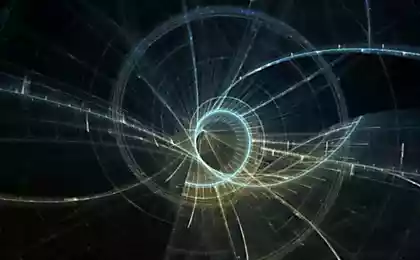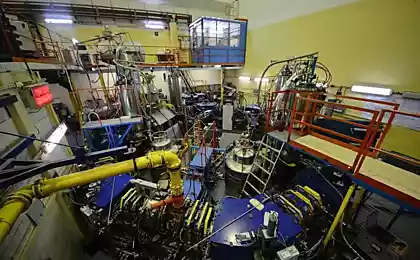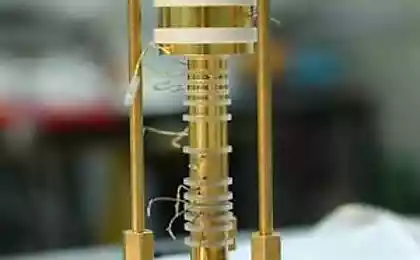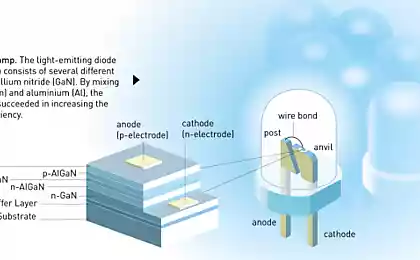432
Solved two mysteries of high-temperature superconductivity in cuprates
American physicists have dealt with the behavior of electrons in the so-called pseudogap phase of matter prior to the state of superconductivity.
Superconductivity is called the complete disappearance of electrical resistance of a substance a constant electric current at temperatures below critical. The huge practical value of superconductors is the absence in them of the loss of electric energy when current flows. However, their widespread use is very low value of critical temperature. For most substances it is close to AB
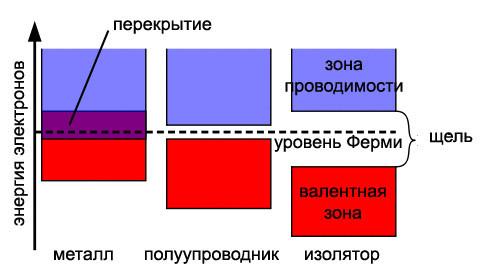
absolute zero. Until 1986 the highest temperature had the alloy Nb3Ge, for which superconductivity occurred at temperatures below 23 K (-250°). Therefore, there is an important scientific task: to find the substances passing into the superconducting state at higher temperatures, preferably close to ambient, which was awarded the title of high-temperature superconductivity.
In 1986 was opened high-temperature superconductors (HTSC) based on copper oxides (cuprates), and in a few years the critical temperature had risen to about 120 K. However, these substances have a very complex electronic structure, which is extremely difficult to understand how there takes place a transition to a superconducting state, without which it is impossible to develop superconductors that operate at higher temperatures. Since then, almost 30 years conducted sophisticated experiments to study this issue.
In particular, it was discovered that the condition of superconductivity in HTSC is preceded by a condition called "pseudogap phase". This term is associated with the peculiarity of the electron energy spectrum in matter (the so-called discrete set of allowed energy levels of electrons in the atom). Electrons with low energy are located in the valence band, the electrons with more energy are able to move through the material in the conduction band. In semiconductors and insulators the valence zone and conduction band divides the interval of forbidden values of energy called the "gap". To participate in the creation of current, the electron needs to gain energy to jump through the gap from the valence band to the conduction band. Therefore, the more the width of the slit, the stronger the insulating properties of the material.
The slit is formed and the superconductor, but it has another nature. In case of superconductivity the electrons close to the Fermi level, forming a so called Cooper pairs and deposited on the Fermi level, and this level begins to separate the gap from the levels of single electrons. The Fermi level is determined by the critical temperature.
It turned out that in HTSC at temperatures above the critical there is a state with a smaller number of allowed levels near the Fermi level than in a conventional conductor. This phenomenon is called "pseudogap". This condition of unknown nature caused many questions among physicists. Since the state pseudogap precedes and exists partially in conjunction with superconductivity (competes with it), scientists believe that the study of this condition will help to uncover the mysteries of high-temperature superconductors. In recent years, this issue is devoted to many activities, one of which was recently published in the journal "Science".Physicists from Brookhaven national laboratory and Cornell University, developed using unique high-precision scanning tunneling microscope, was able to trace the details of cuprate transformation from dielectric to a superconductor through a stage pseudogap. Their experimental setup allowed us to determine spatial location and direction of movement of electrons in the material, which helped to discover two new phenomena.
In the initial state of the studied cuprate Bi2Sr2CaCu2O8+δ is an insulator. To turn it into high-temperature superconductors, to him as the source of charge carriers (holes) are chemically added oxygen atoms. This process is called doping, additional atoms indicated in the formula as "+δ". Physics systematically over a long time scanning the material at various levels of doping to see how the behavior and location of electrons in the evolution of the material in the superconducting state.
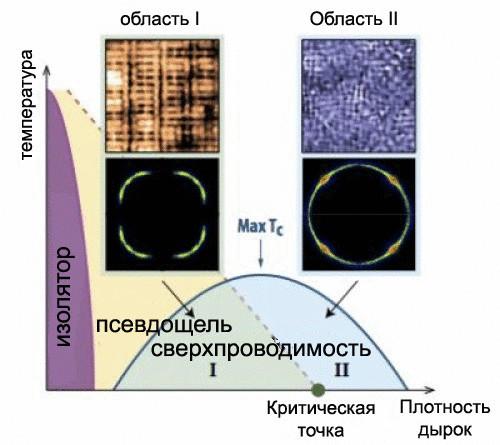
With increasing number of charge carriers (doping level) material passed from the condition of the insulator in pseudogap phase. At low density of charge carriers was observed fairly static picture. There were exotic periodic static arrangement of certain electrons, called "density waves" or "stripes." These waves are similar to the strips of "frozen" electrons. Density waves as the electrons are restricted to certain areas. With further increase in the number of charges the scientists found that the density waves disappear, and the electrons in the material gain the ability to move freely in any direction. And this happens at the same level of doping as the pure appearance of superconductivity.
"For the first time an experiment has directly linked the disappearance of the density waves and their associated nanoscale crystal lattice defects with the advent of the electrons flowing freely in all directions needed for unrestricted superconductivity, said lead author Seamus Davis (Séamus Davis). These new measurements finally showed us why in the mysterious pseudogap state of this material, electrons move less freely".
Davis compares notes with the flight over the frozen river where you can see the static fragments formed by ice, and at the same time to detect the liquid water. These flights occur again and again in the spring when the frozen waterway gradually melts. In cuprate is the increase in temperature, scientists have increased the level of doping to "drown" waves of density to a certain critical point.
This discovery confirms the old idea that waves of density limit the flow of electrons and impairs maximal superconductivity in the pseudogap phase. "Static arrangement of electrons and the associated nanoscale fluctuations disrupt the free flow of electrons is like the ice on the river impairs the flow of liquid water," says Davis.
Of course, HTSC is not as easy as to break the ice, but this discovery gives us clues. If prevent the formation of static stripes, when they arise, in the end, you can get materials that will act as a superconductor at a lower density doping and a much higher temperature, said Davis.
The source: Sciencedaily, Brookhaven National Laboratory figure captions
Fig. 1. Simplified band diagram for conductors, semiconductors and insulators (ru.wikipedia.org).
Fig. 2. Phase diagram of the HTSC state depending on its temperature and doping level (density of holes). The dotted line is the temperature at which the pseudogap – region below the line. Dome-shaped region is a region of superconductivity, its boundary – solid line is the critical temperature. Region 1 corresponds to the overlapping pseudogap and superconducting States. In the photo at the top of a visible static stripes, which disappear in region 2, where there is a net superconductivity. The white area is normal metal state.
Source: nkj.ru
"Flower of the twelve gods" or forgotten medicinal properties.
Locavore restaurants are gaining popularity in the world



